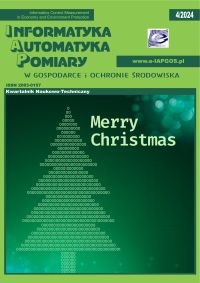DIGITAL IMAGE RESTORATION USING SURF ALGORITHM
Shanmukhaprasanthi Tammineni
prashanthitammineni.rs@andhrauniversity.edu.inAndhra University College of Engineering, Department of Electronics and Communication Engineering (India)
https://orcid.org/0009-0000-5352-2265
Swaraiya Madhuri Rayavarapu
Andhra University College of Engineering, Department of Electronics and Communication Engineering (India)
https://orcid.org/0009-0007-7559-2142
Sasibhushana Rao Gottapu
Andhra University College of Engineering, Department of Electronics and Communication Engineering (India)
https://orcid.org/0000-0002-0416-2918
Raj Kumar Goswami
Gayatri Vidya Parishad College of Engineering for Women, Departement of Electronics and Communication Engineering (India)
https://orcid.org/0000-0002-0651-6783
Abstract
In contemporary times, the preservation of scientific and creative endeavours often relies on the utilization of film and image archives, hence emphasizing the significance of image processing as a critical undertaking. Image inpainting refers to the process of digitally altering an image in a manner that renders the adjustments imperceptible to a viewer lacking knowledge of the original image. Image inpainting is a technique mostly employed to restore damaged regions within an image by utilizing information obtained from matching characteristics in relevant images. This process involves filling in the damaged areas and removing undesired objects. The SURF (Speeded Up Robust Feature) algorithm under consideration is partitioned into three primary phases. Firstly, the essential characteristics of the impaired image and the pertinent image are identified. In the second stage, the relationship between the damaged image and the relevant image is determined in terms of translation, scaling, and rotation. Ultimately, the destroyed area is reconstructed through the application of the inverse transformation. The quality assessment of inpainted images can be evaluated using metrics such as Structural Similarity Index (SSIM), Peak Signal-to-Noise Ratio (PSNR), and Mean Squared Error (MSE). The experimental findings provide evidence that the suggested inpainting technique is effective in terms of both speed and quality.
Keywords:
SURF, inpainting, image restoration, image featuresReferences
Bay H., Tuytelaars T., Van Gool L.: Surf: Speeded up robust features. 9th European Conference on Computer Vision–ECCV 2006, Austria, 2006.
Google Scholar
Bertalmio M. et al.: Image inpainting. Proceedings of the 27th annual conference on Computer graphics and interactive techniques, 2000.
Google Scholar
Bertalmio M. et al.: Simultaneous structure and texture image inpainting. IEEE transactions on image processing 12(8), 2003, 882–889.
Google Scholar
Birajdar G. K., Vijay H. M.: Digital image forgery detection using passive techniques: A survey. Digital investigation 10(3), 2013, 226–245.
Google Scholar
Cheng W. H. et al.: Robust algorithm for exemplar-based image inpainting. Proceedings of International Conference on Computer Graphics, Imaging and Visualization, 2005.
Google Scholar
Criminisi A., Pérez P., Toyama K.: Region filling and object removal by exemplar-based image inpainting. IEEE Transactions on image processing 13(9), 2004, 1200–1212.
Google Scholar
Drori I., Cohen-Or D., Yeshurun H.: Fragment-based image completion. ACM SIGGRAPH 2003 Papers, 2003, 303–312.
Google Scholar
Jia J., Tang C. K.: Image repairing: Robust image synthesis by adaptive and tensor voting. IEEE Computer Society Conference on Computer Vision and Pattern Recognition 1, 2003.
Google Scholar
Kakar P.: Passive approaches for digital image forgery detection. Thesis, 2015.
Google Scholar
Prasanthi T. S. et al.: Performance analysis of different applications of image inpainting based on exemplar technique. International Journal on Recent and Innovation Trends in Computing and Communication 11(4), 2023, 113–117.
Google Scholar
Wong A., Orchard J.: A nonlocal-means approach to exemplar-based inpainting. 15th IEEE International Conference on Image Processing, 2008.
Google Scholar
Wu J., Ruan Q.: Object removal by cross isophotes exemplar-based inpainting. 18th International Conference on Pattern Recognition (ICPR'06) 3, 2006.
Google Scholar
Yogesh Laxman Tonape V.: Faster and Efficient Method for Robust Exemplar Based Inpainting Using Block Processing. International Journal of Computer Science and Information Technologies 6(3), 2015.
Google Scholar
Authors
Shanmukhaprasanthi Tammineniprashanthitammineni.rs@andhrauniversity.edu.in
Andhra University College of Engineering, Department of Electronics and Communication Engineering India
https://orcid.org/0009-0000-5352-2265
Authors
Swaraiya Madhuri RayavarapuAndhra University College of Engineering, Department of Electronics and Communication Engineering India
https://orcid.org/0009-0007-7559-2142
Authors
Sasibhushana Rao GottapuAndhra University College of Engineering, Department of Electronics and Communication Engineering India
https://orcid.org/0000-0002-0416-2918
Authors
Raj Kumar GoswamiGayatri Vidya Parishad College of Engineering for Women, Departement of Electronics and Communication Engineering India
https://orcid.org/0000-0002-0651-6783
Statistics
Abstract views: 135PDF downloads: 128
Most read articles by the same author(s)
- Swarajya Madhuri Rayavarapu, Shanmukha Prasanthi Tammineni, Sasibhushana Rao Gottapu, Aruna Singam, A REVIEW OF GENERATIVE ADVERSARIAL NETWORKS FOR SECURITY APPLICATIONS , Informatyka, Automatyka, Pomiary w Gospodarce i Ochronie Środowiska: Vol. 14 No. 2 (2024)
- Tammineni Shanmukha Prasanthi, Swarajya Madhuri Rayavarapu, Gottapu Sasibhushana Rao, Raj Kumar Goswami, Gottapu Santosh Kumar, RADIO FREQUENCY BASED INPAINTING FOR INDOOR LOCALIZATION USING MEMORYLESS TECHNIQUES AND WIRELESS TECHNOLOGY , Informatyka, Automatyka, Pomiary w Gospodarce i Ochronie Środowiska: Vol. 14 No. 4 (2024)









